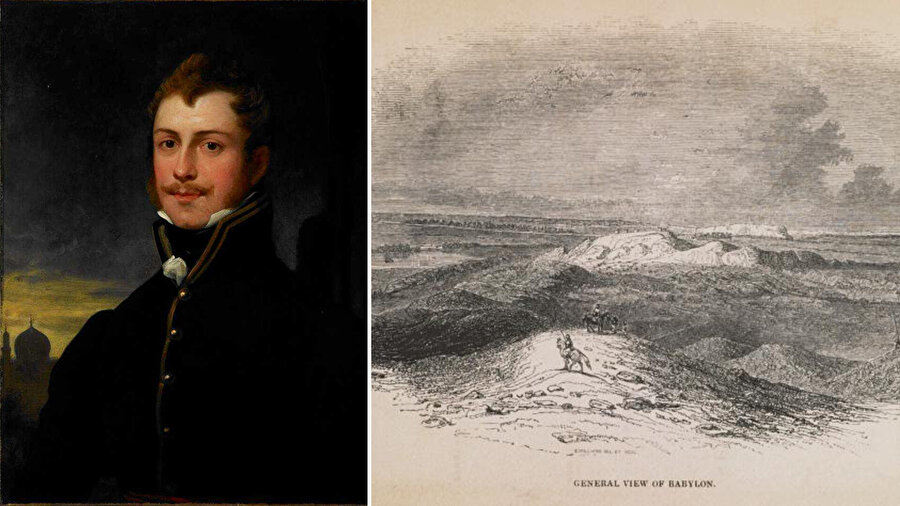A Middle Eastern explorer: Who is Claudius James Rich?
Claudius James Rich, who was born in 1787 near Dijon, France, and spent his youth in Bristol, England, had a special talent for languages that showed itself at a very early age.

Part of what encouraged him to learn a language was his environment in Bristol. Some Arabic manuscripts he saw in the library of a person in this city aroused his desire to learn Arabic.
Rich, who learned Arabic, did not limit himself to this language and did not neglect to learn Hebrew, Syriac, Persian, and Turkish after Arabic. So much so that he had already made serious progress in these languages when he was a teenager.
The languages he knew undoubtedly provided him with important career opportunities. In this way, he probably had the opportunity to see the Middle East geography, which he wanted to travel to.
Claudius James Rich (28 March 1787 – 5 October 1821) was a British Assyriologist, business agent, traveller and antiquarian scholar. Rich was born near Dijon "of a good family", but passed his childhood at Bristol. Early on, he developed a gift for languages, becoming familiar not only with Latin and Greek but also with Hebrew, Syriac, Kurdish, Persian, Turkish and other Eastern tongues. In 1803, by the influence of friends, he was appointed a cadet in the East India Company's service.
Rich, who was appointed as a clerk in the East India Company in 1804, became the assistant of the consul general in Egypt. While his duty here gave him the opportunity to perfect his Arabic, it also gave him the opportunity to explore the geography of Palestine and Syria.
Rich, who did not miss the opportunity to travel to Syria during this time, was able to enter the Umayyad Mosque, which was very difficult for a Western person to enter at that time, while dressed in disguise.
Rich's knowledge and determination to gain new knowledge made him attract attention in a short time. His marriage to the daughter of the governor of Bombay in 1808 was probably a consequence of this. This marriage enabled his career to progress rapidly, and he was appointed to Baghdad and became the representative there.
The most important thing for Rich, who served as a successful administrator here, was to spend his time with ancient ruins. While he had the opportunity to examine the ancient artifacts he could find, he also laid the foundations of the large collection that would later be purchased by the British Museum.
He collected coins, manuscripts, and works of art and visited ancient sites. His travels, especially to Babylon, resulted in him writing a two-volume work about this place. With this feature, he became the founding father of archaeological studies to be carried out in this region.
Rich, who went to the region where the Kurds lived in 1820, published his most important work, Narrative of a Residence in Koordistan, and on The Site of Ancient Nineveh: With Journal of a Voyage Down The Tigris to Bagdad and an Account of. He wrote the book "A Visit to Shirauz and Persepolis".
The work, which discussed the region from an archaeological and geographical perspective, filled an important gap in its field, as it was the first to be written in the 19th century. During this travel, he also contributed to the development of his collection. Rich, who contacted Christian communities in the East, did not neglect to collect manuscripts belonging to these communities.
Rich, who also went to Shiraz, visited the ruins of Persepolis and the tomb of Cyrus the Great and then wrote about what he saw. However, the cholera he caught in Shiraz caused his death despite all medical interventions, and he was buried in Shiraz in 1821.
